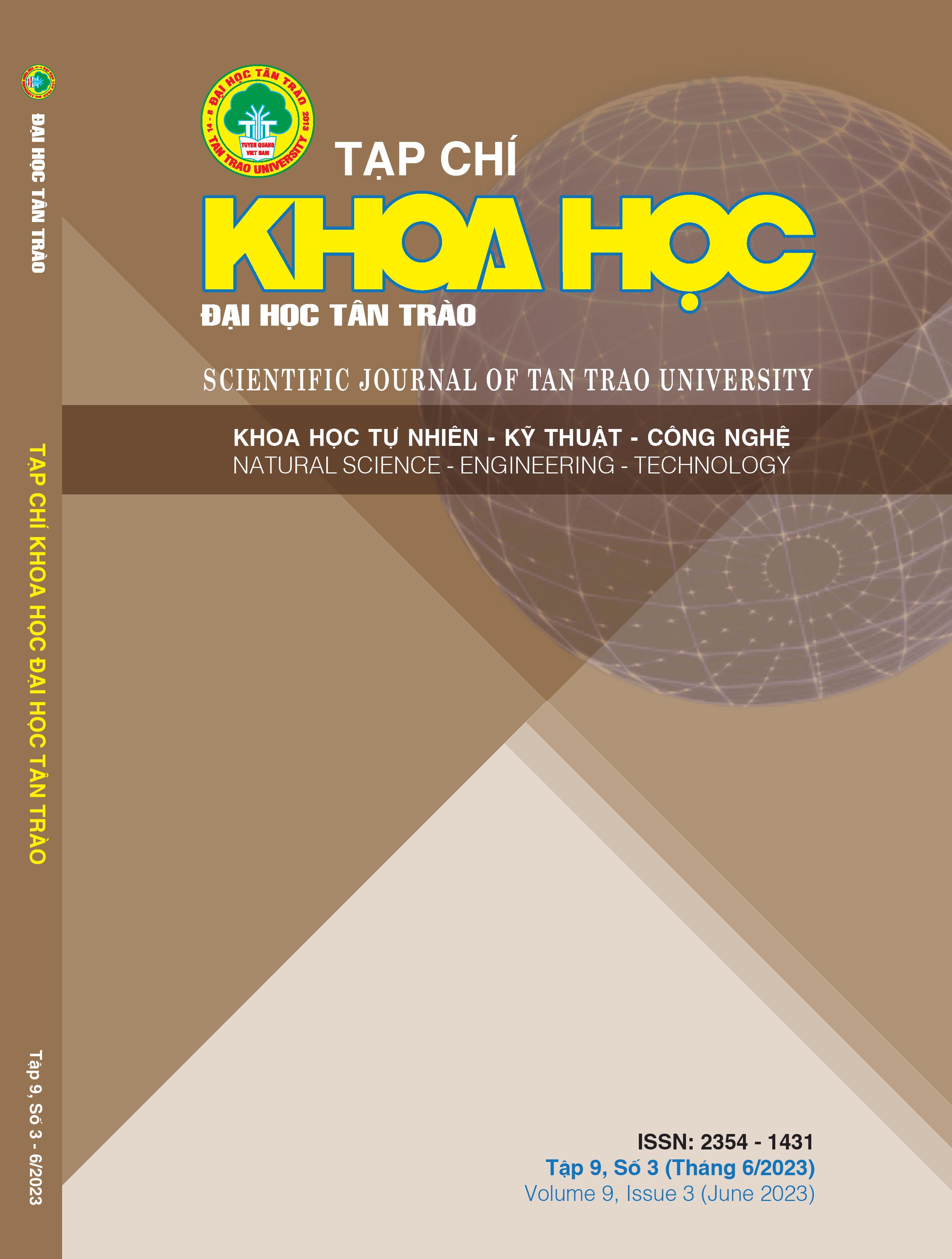INTELLIGENT REFLECTIVE SURFACE SUPPORTS MOBILE NETWORK BEYOND 5G AND 6G
DOI:
https://doi.org/10.51453/2354-1431/2023/969Keywords:
5G, B5G, Beyond 5G, 6G, Reconfigurable Intelligent Surfaces, RIS, Intelligent Reflecting Surfaces, RIS, intelligent reflective surface, super surface, reconfigurable smart surface.Abstract
When the 5G network is born, following the development trend of technology, with the same requirements for processing speed, coverage, reliability, and low latency, there will inevitably be generations of networks Beyond 5G - B5G, 6G is researched and deployed. Along with user requirements, new network applications and scopes will bring many problems and challenges, requiring different communication models, and effective coordination technologies, especially in the physical layer. An outstanding technology that helps to optimize wireless communication systems are RIS (Reconfigurable Intelligent Surfaces) reflective surfaces. RIS helps to overcome the negative impacts of traditional communication systems, reduce interference, ensure reliability, increase security, optimize transmission channels, improve spectrum efficiency, save energy, open wide coverage, meet the requirements of users' data speed and quality of service, contributing to improving the overall performance of the entire communication system. In order to provide network designers, researchers, and authors, the author will conduct a survey of works to provide information on the theory of structure and operation of this outstanding technology.
Downloads
References
[1] “Cisco visual networking index: Global mobile data traffic forecast update, 2017–2022,” Feb. 2019. [Online] Available: https://www.cisco.com/c/en/us/solutions/collateral/service-provider/visual-networking-index-vni/white-paper-c11-738429.pdf
[2] M. Patzold, “It’s time to go big with 5G mobile radio,” IEEE Vehicular Technology Magazine, vol. 13, no. 4, pp. 4–10, 2018.
[3] W. Saad, M. Bennis, and M. Chen, “A vision of 6G wireless systems: Applications, trends, technologies, and open research problems,” arXiv preprint arXiv:1902.10265, 2019.
[6] Q. Wu and R. Zhang, “Towards smart and reconfigurable environment: Intelligent reflecting surface aided wireless network,” IEEE Commun. Mag., vol. 58, no. 1, pp. 106–112, Jan. 2020.
[7] M. D. Renzo et al., “Smart radio environments empowered by reconfigurable AI meta-surfaces: An idea whose time has come,” EURASIP J. Wireless Commun. Netw., vol. 2019, May 2019, Art. no. 129.
[8] E. Basar, M. D. Renzo, J. de Rosny, M. Debbah, M.-S. Alouini, and R. Zhang, “Wireless communications through reconfigurable intelligent surfaces,” IEEE Access, vol. 7, pp. 116 753–116 773, 2019.
[9] C. Liaskos, S. Nie, A. Tsioliaridou, A. Pitsillides, S. Ioannidis, and I. Akyildiz, “Realizing wireless communication through software-defined hypersurface environments,” in Proc. IEEE 19th Int. Symp. on "A World of Wireless, Mobile and Multimedia Netw." (WoWMoM), Jun. 2018, pp. 14–15.
[10] S. V. Hum and J. Perruisseau-Carrier, “Reconfigurable reflectarrays and array lenses for dynamic antenna beam control: A review,” IEEE Trans. Antennas Propag., vol. 62, no. 1, pp. 183–198, Jan. 2014.
[11] V. Arun and H. Balakrishnan, “RFocus: Practical beam- forming for small devices,” May 2019. [Online] Available: http://arxiv.org/abs/1905.05130.
[12] H. Chen, A. J. Taylor, and N. Yu, “A review of metasurfaces: Physics and applications,” Rep. Progr. Phys., vol. 79, no. 7, Jun. 2016, Art. no. 076401.
[13] C. Huang et al., “Holographic MIMO surfaces for 6G wireless networks: Opportunities, challenges, and trends,” [Online] Available: http://arxiv.org/abs/1911.12296.
[14] Q. He, S. Sun, and L. Zhou, “Tunable/reconfigurable metasurfaces: Physics and applications,” Research, vol. 2019, pp. 1–16, Jul. 2019.
[15] F. Liu, A. Pitilakis, M. S. Mirmoosa, O. Tsilipakos, X. Wang, A. C. Tasolamprou, S. Abadal, A. Cabellos-Aparicio, E. Alarcón, C. Liaskos, N. V. Kantartzis, M. Kafesaki, E. N. Economou, C. M. Soukoulis, and S. Tretyakov, “Programmable metasurfaces: State of the art and prospects,” in proc. IEEE Int. Sym. Circuits Syst. (ISCAS), May 2018.
[16] F. Liu, O. Tsilipakos, A. Pitilakis, A. C. Tasolamprou, M. S. Mirmoosa, N. V. Kantartzis, D.-H. Kwon, J. Georgiou, K. Kossifos, M. A. Antoniades, M. Kafesaki, C. M. Soukoulis, and S. A. Tretyakov, “Intelligent metasurfaces with continuously tunable local surface impedance for multiple reconfigurable functions,” Physical Review Applied, vol. 11, pp. 044 024–044 033, Apr. 2019.
[17] S. Foo, “Liquid-crystal reconfigurable metasurface reflectors,” in proc. IEEE Int. Sym. Antennas Propag. USNC/URSI National Radio Science Meeting, Jul. 2017, pp. 2069–2070.
[18] C. Liaskos, A. Tsioliaridou, and S. Ioannidis, “Towards a circular economy via intelligent metamaterials,” in proc. IEEE Int. Workshop on Computer Aided Modeling and Design of Communication Links and Networks (CAMAD), Sept. 2018.
[19] K. M. Kossifos, M. A. Antoniades, J. Georgiou, A. H. Jaafar, and N. T. Kemp, “An optically-programmable absorbing metasurface,” in proc. IEEE Int. Sym. Circuits Syst. (ISCAS), May 2018.
[20] Y. Zhou, G. Zhang, H. Chen, P. Zhou, X. Wang, L. Zhang, l. Zhang, J. Xie, and L. Deng, “Design of phase gradient coding metasurfaces for broadband wave modulating,” Scientific Reports, vol. 8, no. 8672, Jun. 2018.
[21] A. S. da Silva, F. Monticone, G. Castaldi, V. Galdi, A. Alú, and N. Engheta, “Performing mathematical operations with metamaterials,” Science, vol. 343, pp. 160–163, Jan. 2014.
Downloads
Published
How to Cite
Issue
Section
License

This work is licensed under a Creative Commons Attribution-ShareAlike 4.0 International License.
All articles published in SJTTU are licensed under a Creative Commons Attribution-ShareAlike 4.0 International (CC BY-SA) license. This means anyone is free to copy, transform, or redistribute articles for any lawful purpose in any medium, provided they give appropriate attribution to the original author(s) and SJTTU, link to the license, indicate if changes were made, and redistribute any derivative work under the same license.
Copyright on articles is retained by the respective author(s), without restrictions. A non-exclusive license is granted to SJTTU to publish the article and identify itself as its original publisher, along with the commercial right to include the article in a hardcopy issue for sale to libraries and individuals.
Although the conditions of the CC BY-SA license don't apply to authors (as the copyright holder of your article, you have no restrictions on your rights), by submitting to SJTTU, authors recognize the rights of readers, and must grant any third party the right to use their article to the extent provided by the license.


